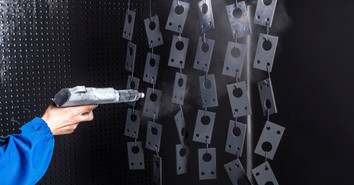For industrial operators, metal coatings offer a simple and effective way to enhance the durability and aesthetics of metal surfaces. Whether you’re a business professional in manufacturing or a DIY enthusiast, understanding the different options available can significantly impact your projects.
In this simple guide to metal coatings, we’ll explore the most common types to consider, their benefits, and how they can transform your metal surfaces into something extraordinary.
Exploring the Basics of Metal Coatings
Metal coatings are thin layers applied to metal objects to protect them or enhance their appearance. The process of coating metals can involve various materials and methods, each offering distinct advantages.
The choice of metal coating depends on several factors, including the type of metal, the environmental conditions it will face, and the desired aesthetic outcome. Additionally, modern techniques have broadened the options available for metal coatings, allowing customization in color, texture, and finish. This versatility means that almost any metal surface can be coated to meet specific requirements, whether functional, aesthetic, or both.
Anodizing for Aluminum
Anodizing is a specialized metal coating process primarily used on aluminum to enhance its surface properties. Unlike other coatings that apply an external layer, anodizing involves altering the metal’s surface itself to create a thicker oxide layer, increasing corrosion resistance and surface hardness.
One of the main advantages of anodizing is its ability to improve aluminum’s natural resistance to wear and corrosion without affecting its lightweight properties. Additionally, anodized surfaces can be dyed in vibrant colors, providing both protective qualities and aesthetic appeal.
Spray Coatings for Versatility and Ease
Spray coatings offer a flexible approach to metal coating and are applicable for a wide range of surfaces and shapes. This method involves spraying liquid coating materials onto the metal surface, creating a thin, uniform layer that can serve both protective and aesthetic functions.
The adaptability of spray coatings makes them suitable for both large-scale industrial applications and smaller artistic projects. The technique allows for quick application and drying, providing efficiency in operations where time constraints are present.
Ceramic Coatings for Thermal and Chemical Resistance
Ceramic coatings are known for their exceptional thermal and chemical resistance, making them ideal for environments with extreme temperatures and corrosive substances. These coatings form a strong barrier that protects metals from oxidative damage and chemical reactions.
Industries such as aerospace and automotive often use ceramic coatings to enhance component performance. The coatings can withstand high temperatures, making them suitable for engine parts and exhaust systems that experience intense heat.
Achieving the Results You Want With Performance Coatings
Choosing the right metal coating requires a comprehensive understanding of the specific needs and challenges associated with your projects. This simple guide to metal coatings explores the most common types to consider, helping you make informed decisions that enhance the performance and longevity of your metal surfaces.
Are you in the market for a metal protective coating that you can use to enhance the look and durability of your metal surfaces? At DuraCoat Performance Finishes, we offer a variety of modern applications for you to choose from—contact our team today to learn more.

